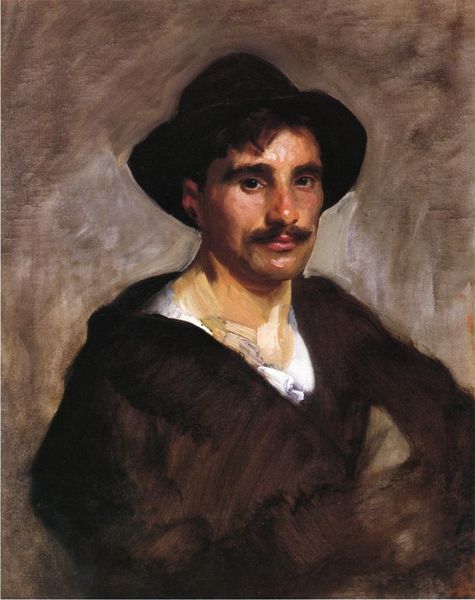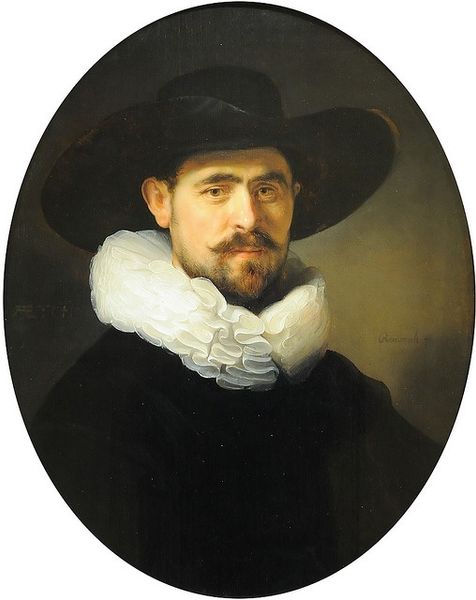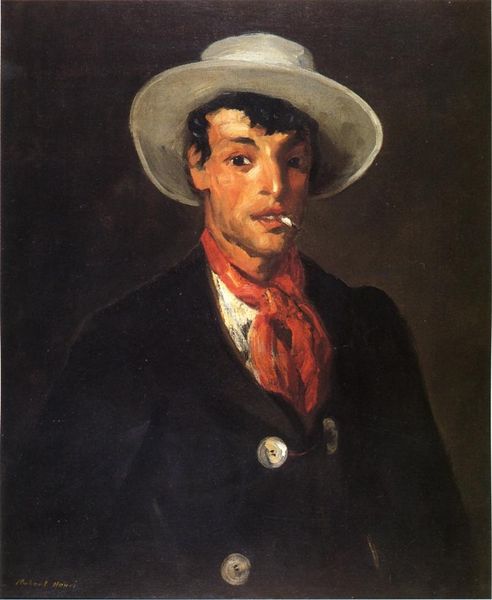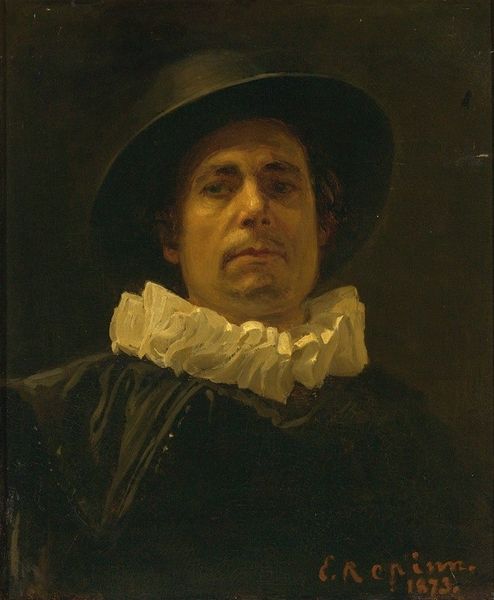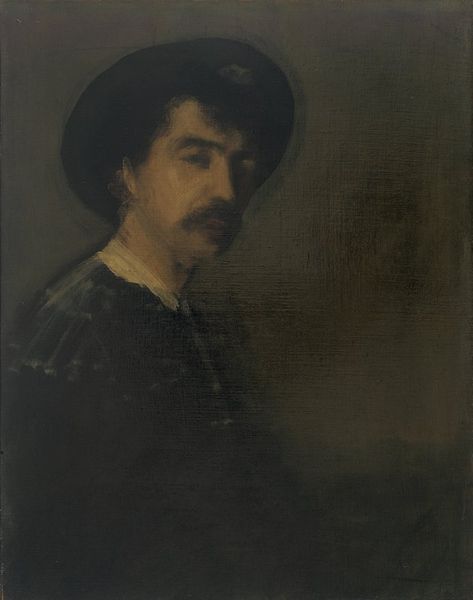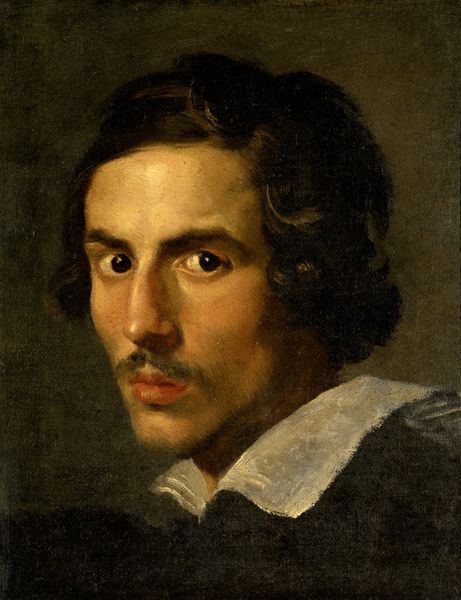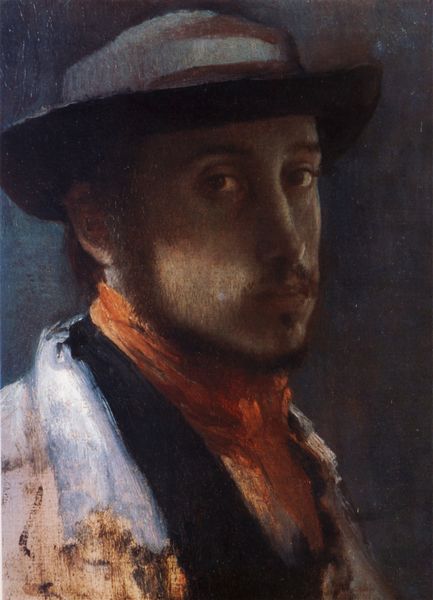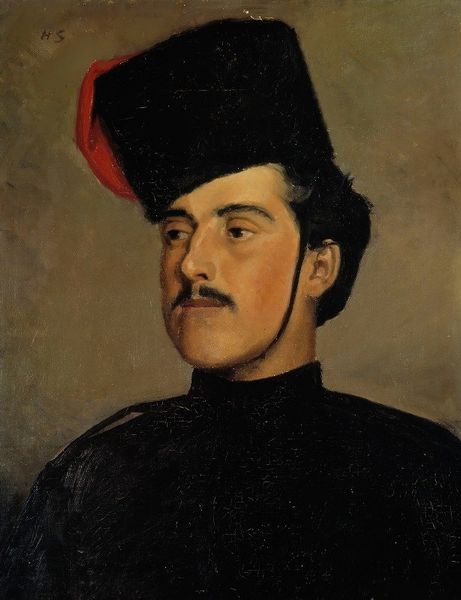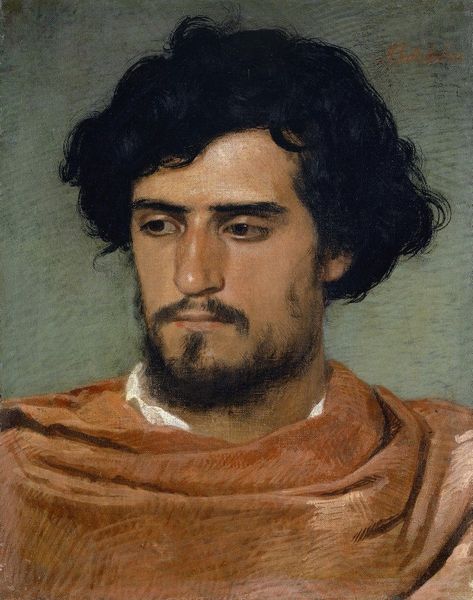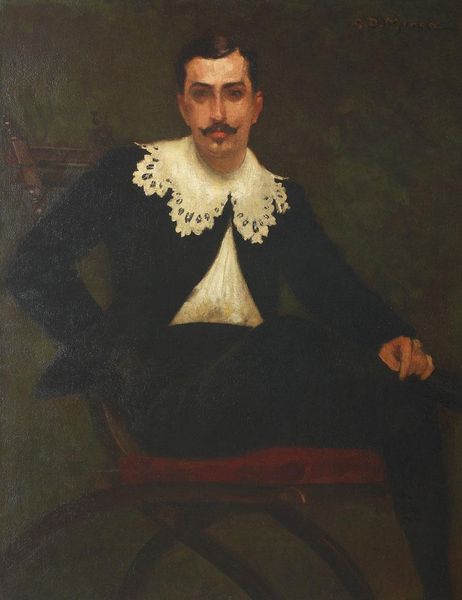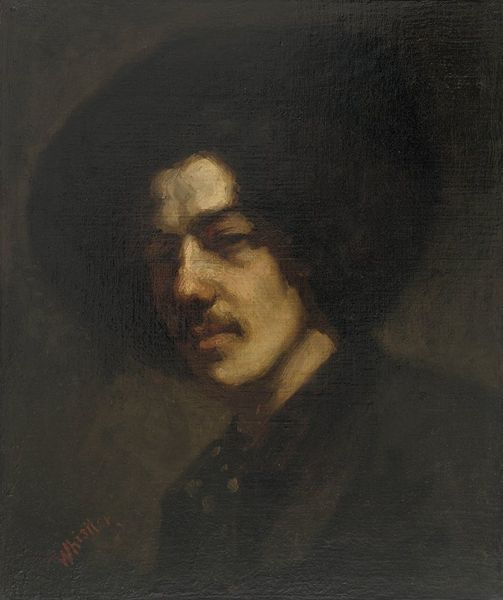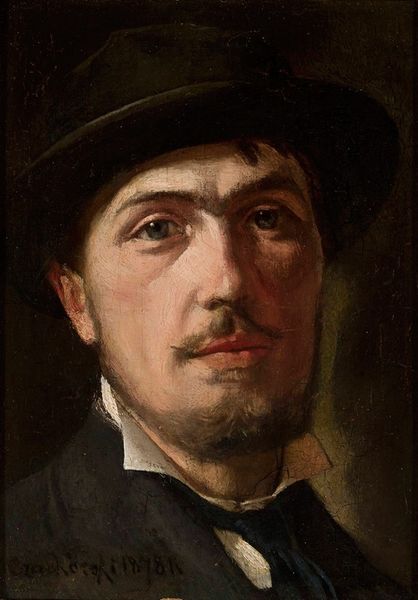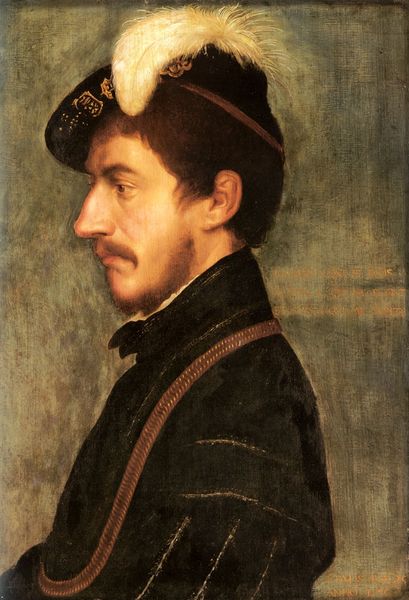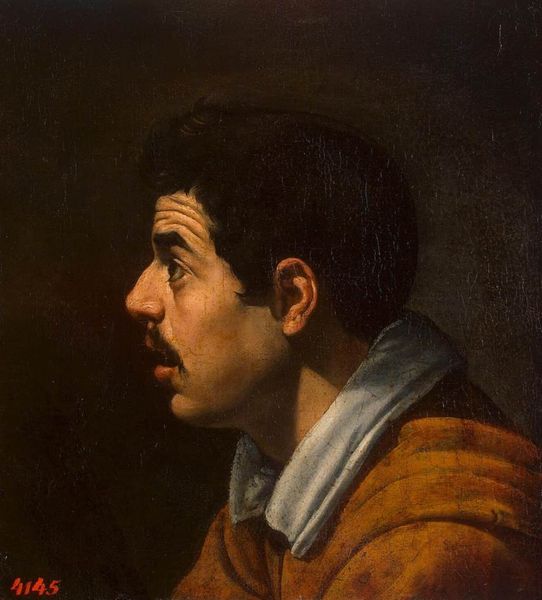
Portrait of Prince Piscicelli
0:00
0:00
alfreddehodencq
Musée des Beaux-Arts de Bordeaux, Bordeaux, France
painting, oil-paint
#
portrait
#
painting
#
oil-paint
#
romanticism
#
history-painting
Copyright: Public domain
Editor: Here we have "Portrait of Prince Piscicelli" by Alfred Dehodencq. The medium is oil paint, but the date of creation seems to be missing. The subject's gaze is intense, and the large hat adds a theatrical air. What's your take on this work? Curator: The Prince's confident stare speaks volumes. Consider the socio-political context: history paintings and portraiture served to solidify power structures. By presenting the Prince in this romantic style, Dehodencq reinforces the subject’s position. Do you think the way he is styled in the painting affects our perception? Editor: Definitely. That wide-brimmed hat and loose shirt almost create an artistic persona rather than just a straightforward royal portrait. Like he's playing a part. Curator: Precisely! Think about the Romanticism movement – a time of intense emotional expression and often idealised versions of historical figures. By presenting him in such a manner, the portrait speaks less to accurate likeness and more toward a performance of princely identity, inviting public admiration. Editor: So the image isn't just about him; it’s about creating a carefully constructed impression for public consumption. The painter, along with the sitter, co-construct his authority and status through very intentional elements in the portrait. Curator: Exactly. The artifice is part of the point. Now, what did you find particularly striking when you first saw this portrait? Editor: I hadn't really considered it that deeply. Seeing this portrait from this perspective is enlightening. Curator: And that's what makes analyzing art such an interesting, and endless, pursuit!
Comments
No comments
Be the first to comment and join the conversation on the ultimate creative platform.
